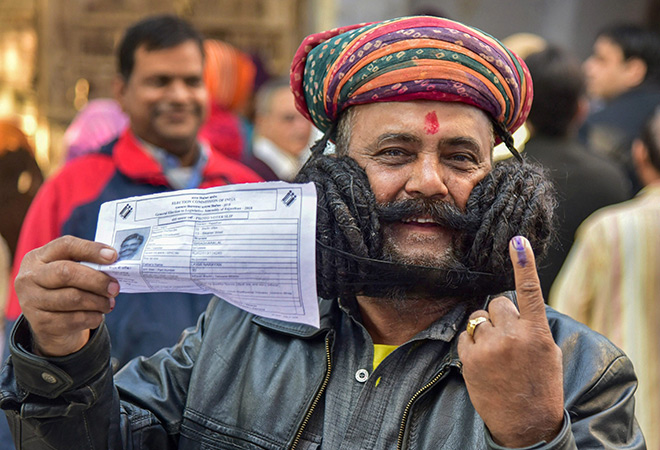
India’s electoral democracy has witnessed sea-changes that are welcome from what is euphemistically referred to as the ‘Seshan era’. As Chief Election Commissioner (CEC) at a critical time through the toddler stage of our infant democracy, T N Seshan guided the process in a way that not only the world outside but also individual voter inside the country could learn to respect the system. As the IT era and generations have since replaced voter-thinking and political management, it may be time to take a closer look more periodically than earlier, to fix matters before it became too late.
As a part of the evolving electoral scene over the past couple of decades, much has been made out of the short-duration campaign, both in terms of the number of days and also the number of hours per day when electoral reach-out is permitted under law. There has been instant compliance. This has also been one area where the otherwise ‘corrupting influence’ of the political class has complied with the law as laid down by the EC, without outright defiance or procedural/legal challenge.
However, if there is anything instantly repugnant to a noisy democracy as ours, it is this attempt at reducing ‘noise pollution’, which was/is not the primary mandate of the Election Commission. This also applies to strict enforcement of EC diktats against the defacing of walls by pasting posters and drawing murals, carrying the name and face of the local candidate, the party and the symbol. In the absence of all this, the party and leader, flag and symbol, now dictate electoral victory. The winner owes it all to the four of them, and not to individual voters, as used to be the case. Hence he or she is also not accountable to them – or, that too has also become the acceptable practice.
Coalition compulsions
As coincidence would have it, electoral reforms of the short-duration campaign came at a time when ‘coalition politics’ became a national reality. Changing coalition partners, last-minutes negotiations on seat-sharing and candidate-selection have made it even more difficult for the voter to have a ‘KYC’ profile of a different kind – ‘Know Your Candidate’. At introduction, the need for candidates to declare their assets and criminal past excited the voter, but today in the absence of time for the recorded information to percolate, the latter does not know enough to evaluate the information before deciding on his choice – which was the very purpose of the exercise.
At a time when the electorate was numerically fewer, though spread all across distant towns and villages, the candidates got more time to try and meet as many of them as possible, in their homes and village squares. Post-Independence, demographic-disparities, caused by differentiated implementation of small-family norm, limited the re-distribution of voter-strength among Lok Sabha constituencies without altering their numbers. Between the time voter-re-distribution under this scheme happened about a decade ago and now, electoral strength in most urban constituencies especially has returned to earlier, higher figures.
Instantly, a political party candidate named at the last-minute gives up ideas, if any, of reaching out to the voter personally. His minions cannot substitute him, especially if they belong to a coalition party, given their past campaign-records and future possibilities. Money and other gifts become a via media, especially for an aspiration-generation in the economic reforms era, whose domestic needs are many – hence the need for family earnings.
Political match-fixing
The Constitution does not recognise political parties as entities, yet when it comes to elections, the hold of parties and leaderships have only increased under the recent decades of visible electoral reforms. Whether it is Narendra Modi or Rahul Gandhi, Mamata Banerjee or Mayawati, Chandrababu Naidu or Chandrashekhar Rao, the leaderships’ hold over the party and the larger electoral system has only increased, and so has their hold over coalition and candidates’ choice.
Rather than hoping to free the electoral system of party/leadership hegemony, if at all possible, the reforms have only made them the ‘holy cows’ of our democracy. Whatever democracy the EC has prescribed for political parties, it is only in the process of ‘holding’ periodic organisational election. Every political party has been going through the process, but it is evident that it’s all ‘match-fixing’ of a political kind. It is one more area after political donations of ‘electoral bonds’ or whatever kind that our political parties do not contest or challenge one another.
This has also meant that independent candidates, who used to win a relatively substantial share of votes and seats in early elections after Independence, have declined to the point of being decimated. They provided an inherent, internal balance, from within the electoral system. Apprehending ‘independent’ challenges, political parties were compelled to address societal and community needs at the grassroots-level. Today, they are all brushed aside. Lack of campaign time is once again a contributory factor to this, as well.
Acquired impediments
There are other democratic impediments, or impediments to democracy, that the nation has acquired alongside. At a time when the US electoral system was caught in controversies of the ‘hanging chads’ kind, India had fully adopted the EVM (electronic voting machine), something that the world had not expected a ‘poor and illiterate’ country like India to do.
Long after the EVMs became a party of our poll process, we are now tied to the VVPAT (voter-verifiable paper-audit trail), going beyond the contestable challenges to the EVM scheme. It is easy to dismiss criticism of the kind as politically-motivated but a sustained campaign, whose key questions remain unanswered squarely and to the technical satisfaction of all stake-holders can only do more harm than good to the nation’s democratic scheme.
The views expressed above belong to the author(s). ORF research and analyses now available on Telegram! Click here to access our curated content — blogs, longforms and interviews.




 PREV
PREV


